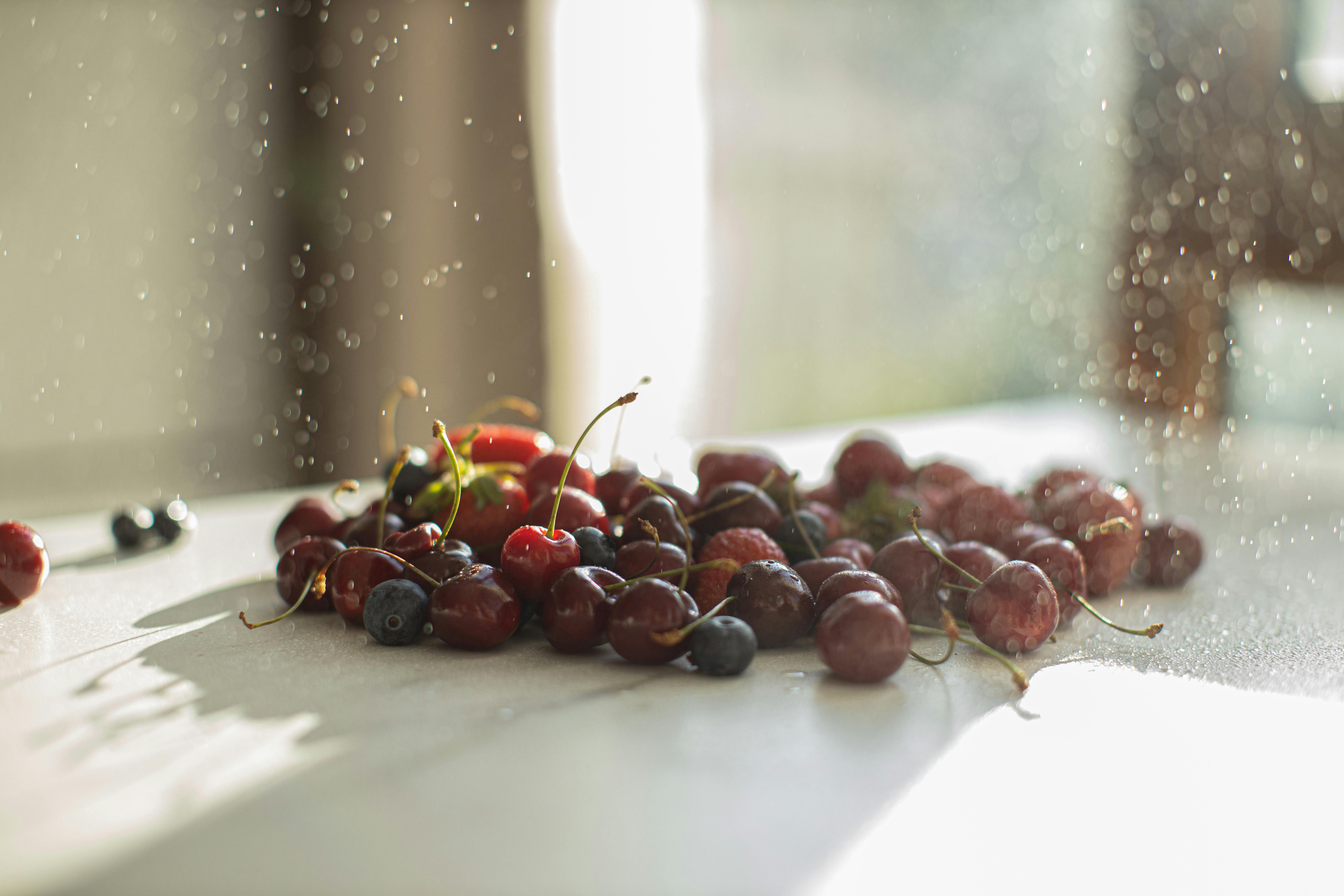Strawberries are a popular and delicious fruit, but they require a specific amount of water to be grown successfully. Knowing how much water to give your strawberry plants is essential for healthy growth and fruit production. In this article, we’ll discuss the importance of proper watering for strawberries and provide tips on how much to water them for optimal growth.Strawberries require 1 to 2 inches of water per week. It’s best to water them in the morning so the moisture has time to soak into the soil and the leaves can dry during the day, which helps reduce disease. If there is no rain in a week, it’s important to water strawberries, as dry soil can cause the fruit to become misshapen.
How Often Should You Water Strawberries?
Watering strawberries is an important part of growing healthy, productive plants. It is important to water your strawberry plants regularly and adequately in order for them to grow and produce large, sweet berries. Generally, strawberries should be watered at least once a week, but more often during dry spells or periods of extreme heat. When determining how much water to give your strawberry plants, you should consider the type of soil they are planted in as well as the amount of rainfall in your area. For sandy soils, you may need to water more often since they tend to dry out quickly. In clay soils, you may need to water less often since they retain more moisture. Additionally, if you live in an area with frequent rainfall, you may not need to water your strawberry plants as much.
When watering your strawberries, be sure to apply the water directly onto the soil near the plant’s roots and not on the leaves or flowers. Doing so will help ensure that the soil is moist enough for the plants’ roots to absorb it properly and reduce any potential disease or pest issues that could arise from wet foliage. Make sure that each plant receives enough water so that the soil is damp at least four inches below the surface for best results. Additionally, avoid over-watering your strawberry plants as this can cause root rot or nutrient deficiencies that can weaken your plants and lead to poor yields.
Overall, it is important to provide adequate amounts of water for your strawberry plants on a regular basis so that they can produce plenty of delicious fruit throughout the growing season!
What Are the Best Times to Water Strawberries?
Watering strawberries at the right time is an important part of growing healthy plants. The best times to water strawberries are in the morning before the sun is too hot and in the evening after it has cooled off. During the summer, watering early in the morning is especially important because it helps prevent diseases from developing on the leaves and fruit. In addition, it gives the plants time to absorb as much water as possible before temperatures start to rise.
In the evening, you can water your strawberry plants again if they look dry or wilted. This will help keep them hydrated throughout the night and will ensure that they are ready for another day of growing. You should also check your plants regularly for signs of over-watering such as yellow leaves or stem rot, which can indicate that they need less water.
It’s also important to avoid overwatering your strawberry plants. Overwatering can lead to root rot and other diseases that can damage or even kill your plants. When watering, try to avoid wetting the foliage too much since this can promote fungal growth and attract pests like slugs and snails. Instead, focus on getting water deep down into the soil where it’s needed most.
Overall, when watering strawberries it’s important to do so at times when they’ll receive maximum benefit from the water – early in the morning or later in the evening – and make sure that you don’t overwater them or get their foliage too wet. By following these tips you can ensure that your strawberry plants stay healthy and produce a great crop of berries year after year!
Proper Watering for Strawberries
Watering is essential for the health and growth of strawberries. Proper watering of strawberry plants helps to ensure that they are able to reach their full potential and produce high yields of delicious fruits. Proper watering also helps to reduce the incidence of diseases and pests that can damage or even kill strawberry plants.
The best way to water strawberry plants is to give them a deep soaking every few days, rather than frequent shallow watering. This allows the water to penetrate deeply into the soil, providing the plant with moisture and nutrients it needs for healthy growth. Watering should be done early in the morning when temperatures are cooler and there is less evaporation, allowing more of the water to soak into the soil.
In addition to providing adequate moisture, proper irrigation also helps regulate air temperature around the roots of strawberry plants. When soil is kept moist, it can help keep temperatures warm during cold nights, which is beneficial for strawberries as they are not tolerant of cold temperatures. Warmer air also increases photosynthesis rate which helps strawberry plants produce more fruit.
Proper watering also prevents problems such as nutrient deficiencies and root rot. When soils become too dry or too wet, they can become depleted in nutrients or cause root rot due to lack of oxygen in overly wet soils. Additionally, when soils become too dry or too wet, weeds can thrive and compete with strawberry plants for resources such as sunlight, water and nutrients.
Overall, proper watering is essential for optimal growth and production of strawberries. It helps promote healthy root development, regulates air temperature around roots, prevents nutrient deficiencies and root rot, reduces weed competition, and increases photosynthesis rate which leads to better yields of delicious fruit!
Overwatering Strawberries: Risks and Impacts
It is important to be aware of the risks associated with overwatering strawberries. Overwatering can lead to root rot, a fungal disease that can weaken the plant, reduce yields, and even cause death. The primary symptom of root rot is wilting of the leaves due to lack of sufficient oxygen in the soil. Other symptoms include yellowing leaves, stunted growth, and a decrease in fruit production. If left unchecked, root rot can spread to other parts of the plant, leading to more serious damage.
In addition to root rot, overwatering can also lead to nutrient deficiencies in strawberries. When water accumulates around the roots of strawberry plants, it reduces their ability to absorb necessary nutrients from the soil. This leads to stunted growth and poor fruit production, as well as decreased resistance to pests and diseases.
Finally, overwatering can cause soil compaction which prevents air circulation around the roots. This reduces oxygen levels in the soil and weakens the plant’s roots over time. As a result, strawberry plants may become susceptible to drought or cold temperatures which could reduce yields or even cause death.

Watering Frequency
Watering strawberries is an important part of growing a healthy crop. It is essential to provide enough water for the plants to grow and produce fruit. The frequency of watering depends on the climate and soil conditions in your area. In general, strawberries should be watered at least once a week during the summer months and less frequently in the winter. If you live in a dry climate, you may need to water more often than once a week. Additionally, if your soil is sandy or has poor drainage, you will need to water more frequently as well.
Amount of Water
The amount of water that you provide for your strawberry plants should be enough to moisten the top few inches of the soil. If your soil is heavy or clay-like, it may take more water to achieve this level of moisture. You should also avoid over-watering as this can lead to root rot and other problems for your plants. When watering, it is best to use enough water to moisten the entire root zone but not so much that it becomes saturated.
When To Water
It is best to water strawberry plants in the mornings when temperatures are cooler and there is less chance of evaporation. This will help keep the moisture in the ground longer and provide better hydration for your plants. Additionally, avoiding late afternoon or evening watering can help prevent fungal diseases from taking hold on your crops.
Quality of Water
The quality of water you use on your strawberry plants can also have an effect on their health. Tap water that has been treated with chlorine can be used but it should be allowed to sit overnight before being applied so that any chlorine residue has time to evaporate off. Rainwater or filtered or distilled water is preferable as it does not contain any additional chemicals that could potentially damage your plants.
Best Practices for Watering Strawberries
Watering strawberries is an important part of their growth and overall health. It is essential to provide the proper amount of water for optimal growth and productivity. The best way to water strawberries is to use drip irrigation, which will ensure that the soil stays evenly moist and the strawberry plants receive an even amount of water. Additionally, it helps reduce runoff and conserve water.
It is also important to water strawberries at the correct time. The best time to water is in the morning or early evening when temperatures are cooler and evaporation rates are lower. Avoid watering during midday when temperatures are high as this could cause the soil to dry out quickly.
When watering strawberries, always use lukewarm water as cold or hot water can shock the roots of the plants. Additionally, water around the base of each plant instead of over-the-top watering, which can wash away beneficial nutrients in the soil. Water until you can see it seeping into the soil around each plant; this indicates that enough moisture has been provided to reach its roots.
Finally, avoid overwatering as this can cause root rot and other diseases in your strawberry plants. Make sure your soil drains well so excess moisture does not accumulate around the roots, which can lead to root rot or other issues with your strawberry plants’ health and productivity.
Watering Your Strawberries Properly
Watering your strawberries correctly is essential for a successful harvest. Too much water can drown the roots, while too little water can lead to wilting and disease. There are a few common mistakes that you should be aware of when watering your strawberries. Here are some tips for avoiding them:
Don’t Overwater
One of the most common mistakes when watering strawberries is overwatering. Too much water can lead to root rot, which will kill your plants and cause fruit to drop off prematurely. When watering your strawberries, make sure the soil is just moist – not soggy. A good way to determine if the soil needs more water is to stick your finger in it – if it feels dry, then it’s time to water again.
Don’t Water too Often
It’s also important not to water your strawberries too often. While they need plenty of water during the growing season, overwatering can lead to root rot and other problems. It’s best to check the soil moisture before watering – if it feels damp or wet, hold off until it dries out a bit.
Use Mulch to Conserve Moisture
Using mulch around your strawberry plants can help keep moisture in the soil and prevent weeds from taking over. A layer of straw or grass clippings around the base of each plant will help keep moisture in and reduce evaporation from the sun.
Water at Ground Level
When you do water your strawberries, make sure that you direct the hose at ground level rather than from above. This will help prevent fungal diseases such as powdery mildew from developing on the leaves and fruit.
Check for Signs of Disease or Pests
Finally, be sure to check for signs of disease or pests before you start watering your strawberries. Fungal diseases such as powdery mildew can spread quickly with over-watering, so be sure that any affected plants are treated before continuing with regular watering schedules.
Following these tips will help ensure that your strawberry plants receive all the water they need without being over-saturated and susceptible to disease or pests. With proper care and attention, you’ll have a healthy harvest of delicious berries!

Conclusion
Strawberries are an easy-to-maintain crop when it comes to watering. The amount of water they need depends largely on the climate and the size of the plants. In dry climates, they should be watered deeply once a week, while in humid climates, they should be watered more often. It is important to keep an eye on the soil and water accordingly as over-watering can decrease fruit production and increase disease susceptibility. Overall, strawberries require around 1-2 inches of water per week for optimal growth and fruit production.
By taking into consideration the climate, soil type, size of plants, and other factors, you will be able to determine how much water your strawberry plants need in order to thrive. By providing adequate water on a regular basis, you can ensure your strawberry crop yields plenty of delicious fruits!



